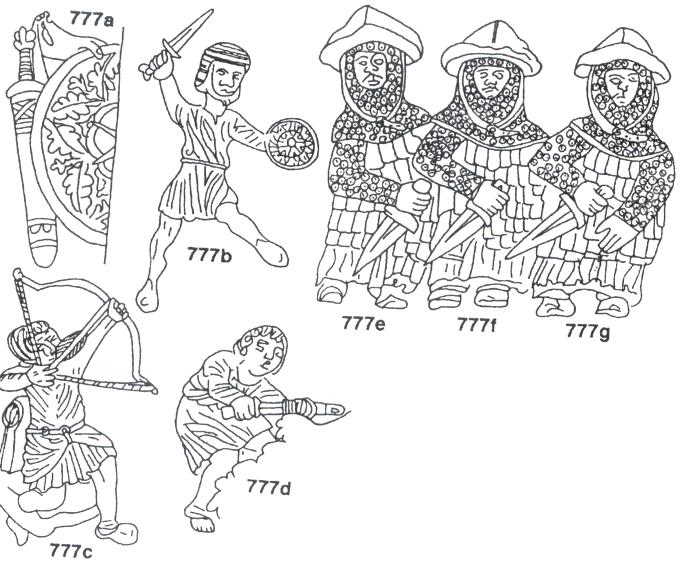Find the perfect fit with Amazon Prime. Try Before You Buy. Amazon Audible Gift Memberships |
You can support these web-sites by donating: |
Carvings around the west door of Laurentius Cathedral, Trogir, in Dalmatia, Croatia, by Master Radovan, 1240AD.
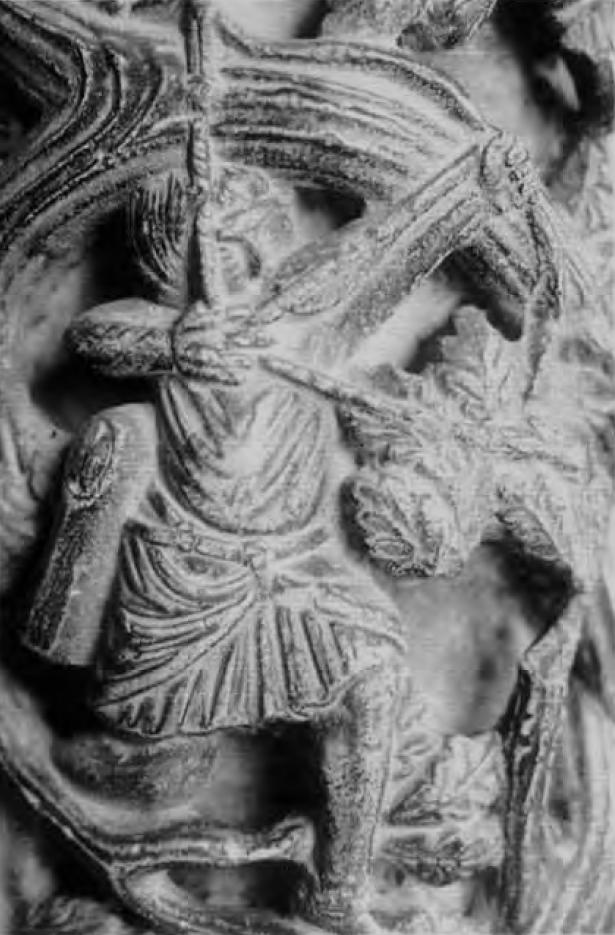 Carvings on the west door of Trogir Cathedral in Dalmatia, made by Master Radovan in 1240. Though essentially Romanesque in style, Radovan's carvings include unusual costume and weaponry reflecting the Slav population of Dalmatia. This archer (left) has a composite bow and a quiver of almost Central Asian form. The 'Guards at the Holy Sepulchre' (right) wear scale or lamellar armour over their mail hauberks and, with their wide-brimmed chapel-de-fer helmets, are probably based on Serbian or Byzantine soldiers. Source: p.4, The Venetian Empire 1200-1670 (Osprey MAA No 210) by David Nicolle |
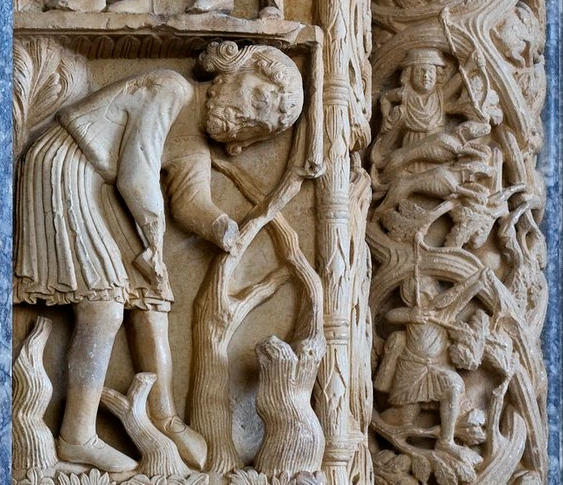 Photo by gerardclubfoto 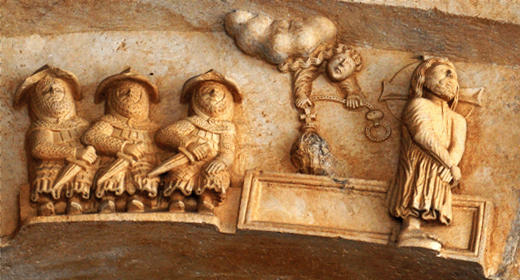 A larger image of Guards at the Resurrection. Carving on the tympanum of the west door of Trogir Cathedral in Dalmatia, Croatia, by Master Radovan. Photo from Christian Iconography |
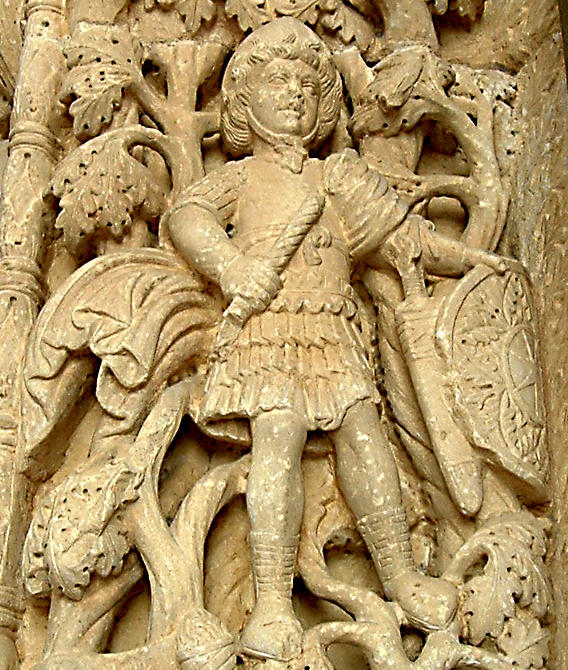
Soldier in Roman Armour
Photo by John W. Schulze
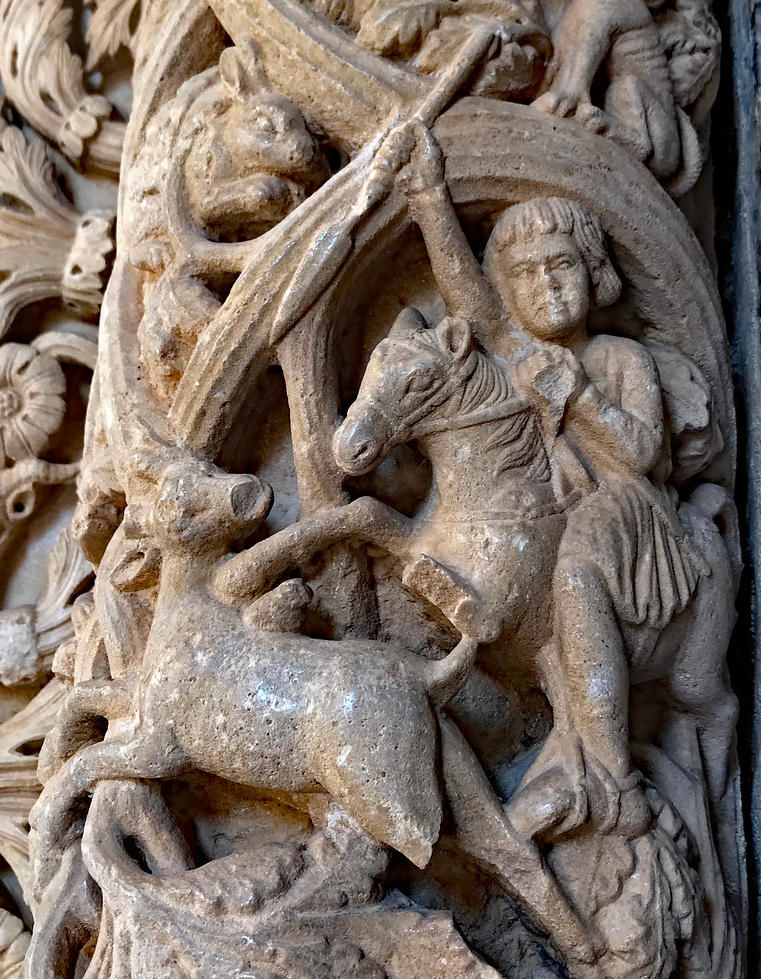
Mounted hunter
Photo by Allie_Caulfield

